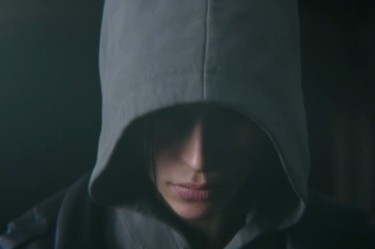 For a few years now, I’ve been raving about Crystal Dynamics’ reboot of Tomb Raider and their reimagining of its protagonist, Lara Croft, from a scantily clad, hypersexualized, adolescent male fantasy to a more realistic, appropriately dressed and anatomically restrained, tough, gritty survivor (see my earlier post here). I applauded their depiction of her as an imperfect woman forced by circumstance to make difficult choices and carry out some fairly gruesome acts in order to stay alive and save her friends. Lara’s not proud of what she does, nor does she take pleasure in it. She does it because she has to, because her only other option is to give up.
For a few years now, I’ve been raving about Crystal Dynamics’ reboot of Tomb Raider and their reimagining of its protagonist, Lara Croft, from a scantily clad, hypersexualized, adolescent male fantasy to a more realistic, appropriately dressed and anatomically restrained, tough, gritty survivor (see my earlier post here). I applauded their depiction of her as an imperfect woman forced by circumstance to make difficult choices and carry out some fairly gruesome acts in order to stay alive and save her friends. Lara’s not proud of what she does, nor does she take pleasure in it. She does it because she has to, because her only other option is to give up.
That both gamers and critics praised Tomb Raider came as no surprise. At long last, the franchise had a game that looked stunning, played beautifully, and featured a tough, intelligent heroine that both men and women cared about and could believe in. Here, at last, was the Lara Croft we’d all been waiting for.
And now, Crystal Dynamics has done it again. At Microsoft’s E3 press conference this past Monday, they revealed a teaser trailer for Rise of the Tomb Raider, slated for a late 2015 release. The trailer features all the energy and excitement of the first game, including a few very tense moments of Lara in peril—no surprise there. But it features something else, something unprecedented in the history of gaming.
 The video begins, not with Lara escaping death or brutally overcoming an attacker, but with her in therapy. You read that right: therapy. We see her on the edge of a chair, cloaked in a hoodie, head downcast. As the therapist talks, Lara digs her fingers into the upholstery, clenches her fist, bounces her leg. She can’t sit still. She’s clearly anxious and uncomfortable. This is not the bulletproof heroine we’ve come to expect, casually shaking off the death she’s dealt. Lara has experienced horrors the likes of which most of us can’t imagine, and she’s been deeply affected by them. But neither is she a broken woman. Battered and scarred yet alive, she’s found away to exist in between. Her therapist continues:
The video begins, not with Lara escaping death or brutally overcoming an attacker, but with her in therapy. You read that right: therapy. We see her on the edge of a chair, cloaked in a hoodie, head downcast. As the therapist talks, Lara digs her fingers into the upholstery, clenches her fist, bounces her leg. She can’t sit still. She’s clearly anxious and uncomfortable. This is not the bulletproof heroine we’ve come to expect, casually shaking off the death she’s dealt. Lara has experienced horrors the likes of which most of us can’t imagine, and she’s been deeply affected by them. But neither is she a broken woman. Battered and scarred yet alive, she’s found away to exist in between. Her therapist continues:
For many people, these traumas become a mental trap. They get stuck, like a ship frozen in ice.”
 PTSD. That’s what he’s talking about. This is classic Post-Traumatic Stress Disorder. Lara is suffering from something that affects nearly eight million American adults, that’s all too common among veterans of war and survivors of abuse, that can strike at any age, and that can tear families and communities apart. She has PTSD, and she’s dealing with it. That a video game is so directly dealing with this is extraordinary. And that Lara is working through and recovering from the trauma of her ordeal may provide hope to those facing traumas of their own. I’ll leave you with the experience of a young woman suffering from PTSD who, while playing Tomb Raider, discovered just that:
PTSD. That’s what he’s talking about. This is classic Post-Traumatic Stress Disorder. Lara is suffering from something that affects nearly eight million American adults, that’s all too common among veterans of war and survivors of abuse, that can strike at any age, and that can tear families and communities apart. She has PTSD, and she’s dealing with it. That a video game is so directly dealing with this is extraordinary. And that Lara is working through and recovering from the trauma of her ordeal may provide hope to those facing traumas of their own. I’ll leave you with the experience of a young woman suffering from PTSD who, while playing Tomb Raider, discovered just that:
It didn’t hold any punches, but it didn’t need to… it affected me in a way years of therapy never did. It healed me in a way that no one’s physical comfort, words, and condolences could ever do. It made me realize that, much like Lara Croft, I survived as well—and that I had my own path to walk. That my experiences were real and tangible and yes, they defined me, but that I’d have it no other way. I am a survivor and I am alive.”
After years of buried trauma and hidden pain, this young woman had found solace and salvation by her own hand, through Lara Croft and the game. By reimagining Lara, Crystal Dynamics has done the impossible: from a game heroine, they’ve created a human being.
